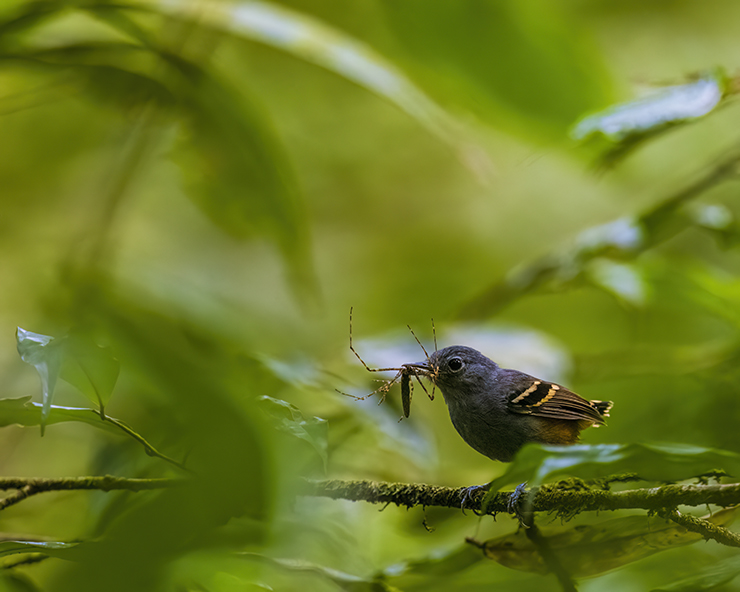
Ardent readers of this blog would realise by now that I have been chronicling a few days spent in Guyana last year – I felt that a single post or two would invariably exclude far too many sightings of note. We began our journey in the famed Botanical Gardens in Georgetown, took our first taste of the land of many waters, poked around a friend’s farm, and at long last, began our journey into the wild green heart of the country.
After what seemed like a lifetime of dreaming, we woke up for the first time in Guyanese interior. Unbroken forest stretched for as far as the eye could see. As the light began to fill the clearing on the banks of the Essequibo River, the Band-rumped Swifts that funnelled into a giant crevasse in a massive mora tree now erupted, like bubbles of hot steam escaping a fissure underwater. Looking at the exit point itself ensured that the swifts themselves were a blur; a rushing torrent of bodies in the still shadowed mid-storey. I contemplated how the birds were able to achieve such acceleration after sleeping all night without an ounce of caffeine. Once the swifts ascended well above the canopy, they began to look like birds again.
Meanwhile, the forest edge was awash with birds. Mealy Parrots made their presence known, and we were treated with excellent views of Blue-headed Parrot that flew into a tree we were already examining.
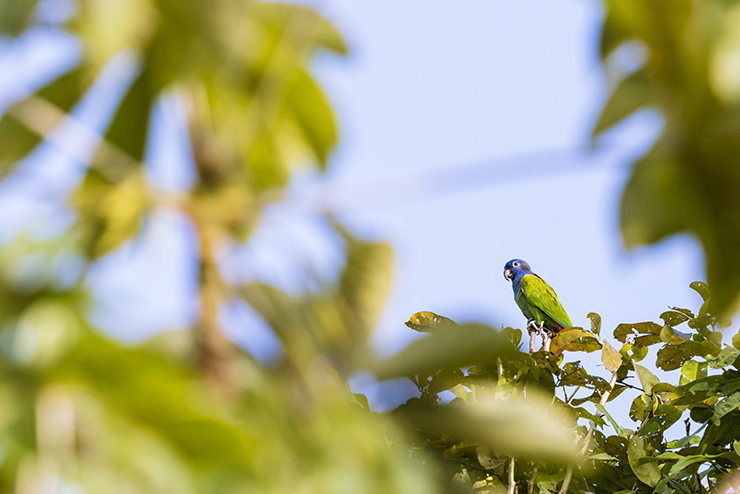
Familiar, but beautiful regardless: Blue-headed Parrot
Another small parrot species landed on a tree in the distance. It was a Black-headed Parrot, a species that I had meagrely attempted to see in Trinidad once without success. There were several psittacines around, but no sign yet of the astoundingly beautiful Painted Parakeet from the previous day.
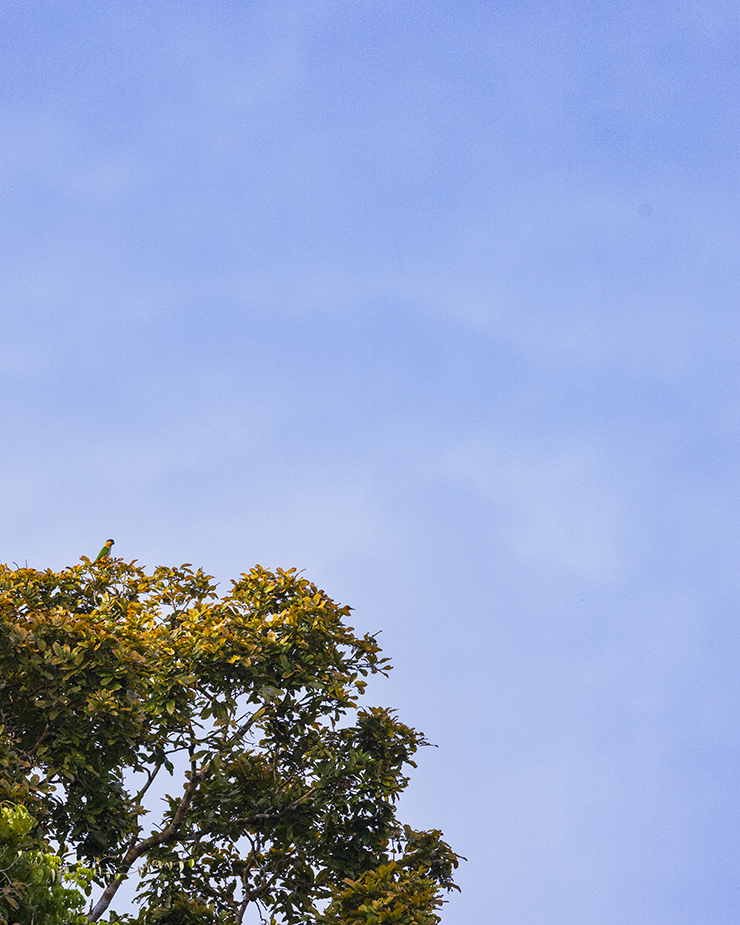
Black-headed Parrot
The reason we had been examining this tree was a trio of small toucans – which would prove to be our first aracaris, ever. These were Black-necked Aracari, and they were everything I had hoped they’d be. Some more movement momentarily made us think there were more than three of these, but a closer examination revealed that the new aracaris were actually Green Aracari, a much less common sighting. Go us, but both were equally exciting.
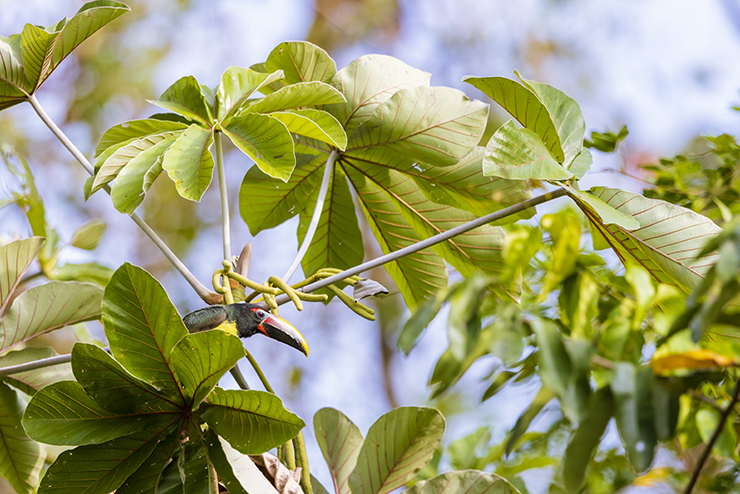
Green Aracari
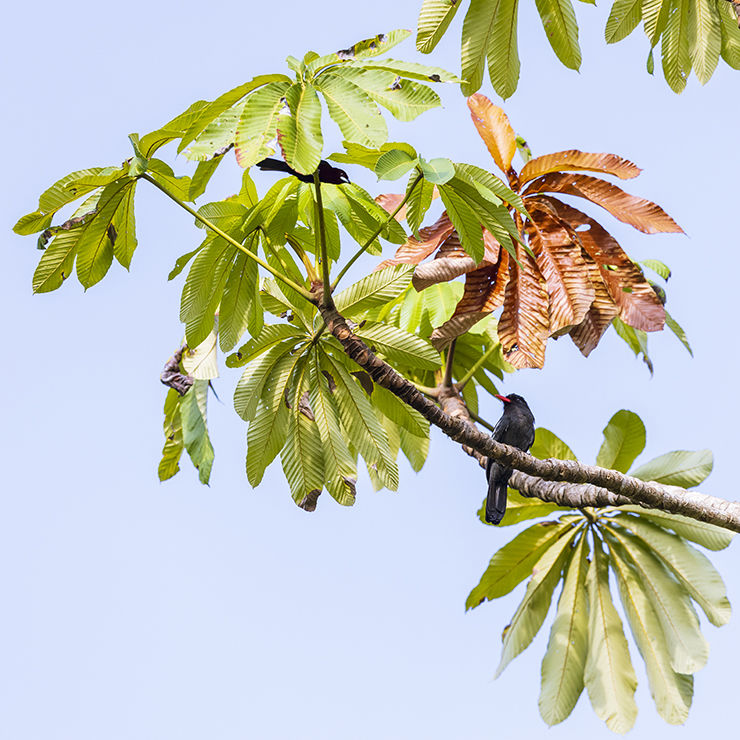
Also hiding in plain sight was this Black Nunbird. Yes, that’s a Silver-beaked Tanager photobombing.
Leon was eager to let one of the many forest trails swallow us, and we weren’t complaining. We left the forest edge habitat and became engulfed by a magnificent jungle almost immediately. A couple bends along the trail and it seemed as if we were out of human contact by a thousand miles. A Screaming Piha cemented the ambience as one of true wilderness. The birds were for the most part playing hard to get, though. Until a small, falcon-like bird darted through the understory. Another familiar face once we got eyes on it – fortunately it perched and didn’t continue along its journey at that moment.
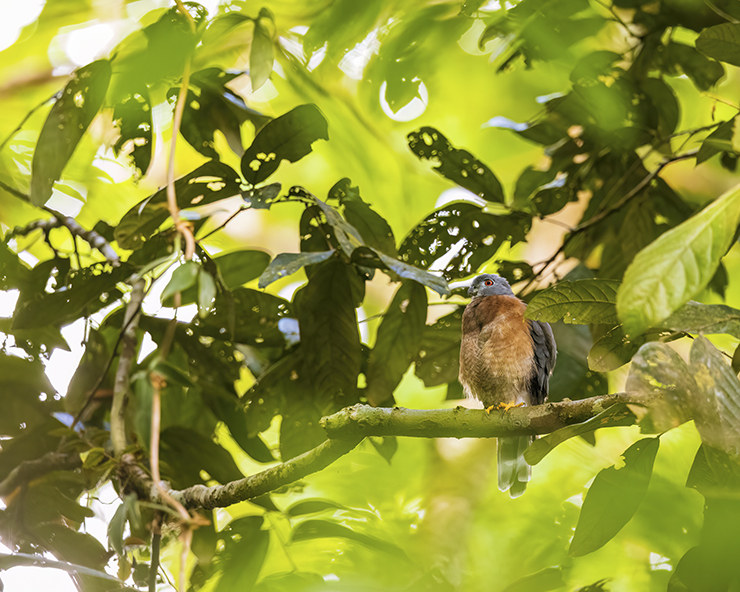
Double-toothed Kite
The overlap in avifauna between Trinidad and Guyana is significant at one end and unavoidable at the other. Still fuelled by the euphoria of getting a great look at the Double-toothed Kite, an infrequently encountered resident of Trinidad’s forests – we found a Chestnut Woodpecker working a tangle in the distant canopy. I’m not sure exactly how far it was, but we didn’t have to lower our voices out of fear of spooking the bird.
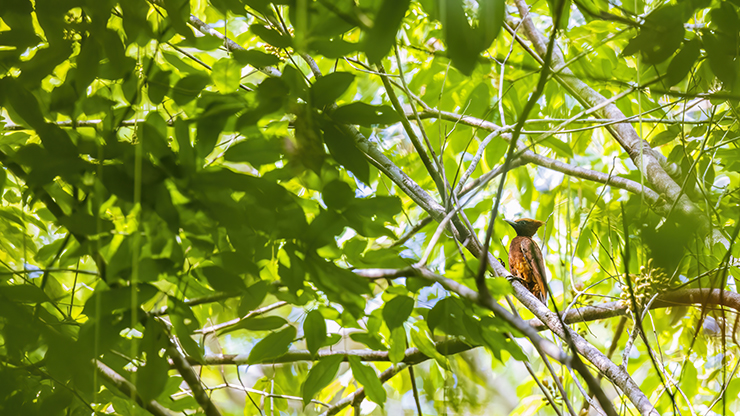
Chestnut Woodpecker, another familiar.
Just as I was getting tired of having to make the most of distant birds in the thickest of thickets (from a photographic standpoint) we stumbled on a very chilled-out White-crowned Manakin. I relished the opportunity.
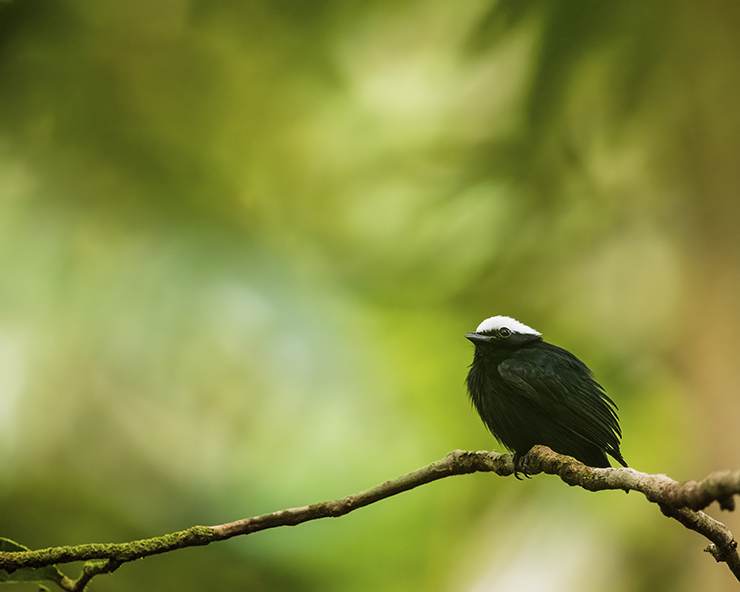
White-crowned Manakin
There was surely a lot of activity in the canopy, problem was that the trees were giants themselves and their crowns were well out of our eyes’ reach. Spider monkeys swung through the highest branches, occasionally letting themselves fall to only a few boughs below, to peer curiously at these poorly adapted bipeds. In the distance, Capuchinbirds wailed. Nearer to us, we caught a brief glimpse at a Tropical Royal Flycatcher. Sadly, I didn’t have the heart to ruffle its feathers enough for it to flash its famous crown.
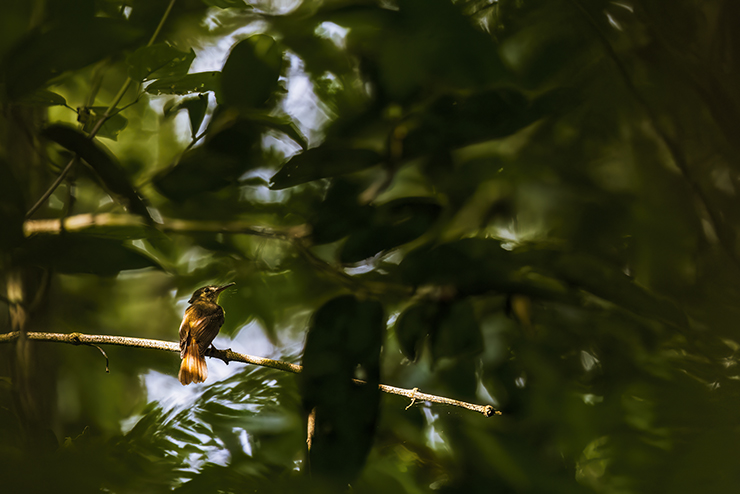
Tropical Royal Flycatcher
After some time, the Capuchinbirds were closer. Their metallic, yet somewhat melancholic bellow has pushed observer creativity when attempting to describe same, as evidenced by this very sentence. Other notable expressions include the lowing of a cow or a distant chainsaw, these along with various iterations of kaks and warks pale in comparison to the most realistic “graaaaaaaaaaoooooooooooooo” – without any doubt the strangest sound I’ve ever heard made by a living creature while still fully alive. As these odd cotingas called to each other, a small group of Spix’s Guan rummaged through the high branches of the canopy, running with ease on swaying limbs. A much more terrifying but no less primeval shrieking announced the arrival of a pair of Red-throated Caracaras. Suddenly, I felt as if I had been transported to a hundred million years prior.
This sensory immersion was transformative, but stumbling upon a pair of foraging Rufous-bellied Antbirds shook me out of that trance. Both male and female expertly and efficiently targeted any movement on or just above the forest floor.
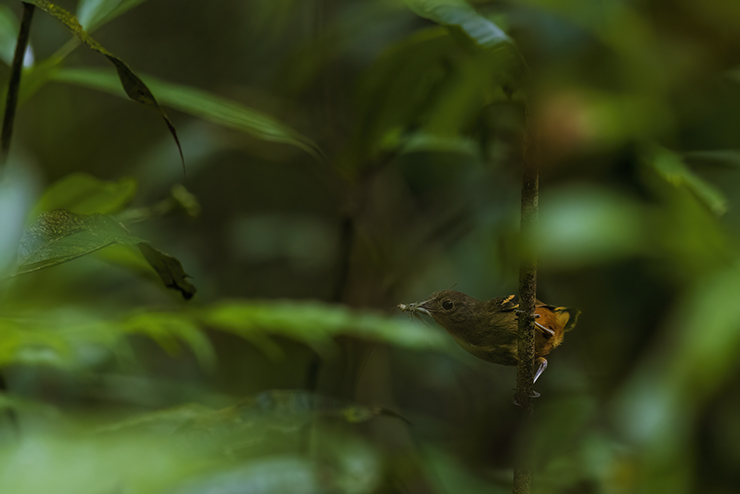
Rufous-bellied Antbird, female (top), male (below)

Eventually the trail spat us out on the river bank, and although we scoured the banks for any herons or kingfishers, we were unsuccessful. A small group of White-winged Swallows occupied a small nook, and I observed the adults dealing with demanding juveniles for a bit before moving on.
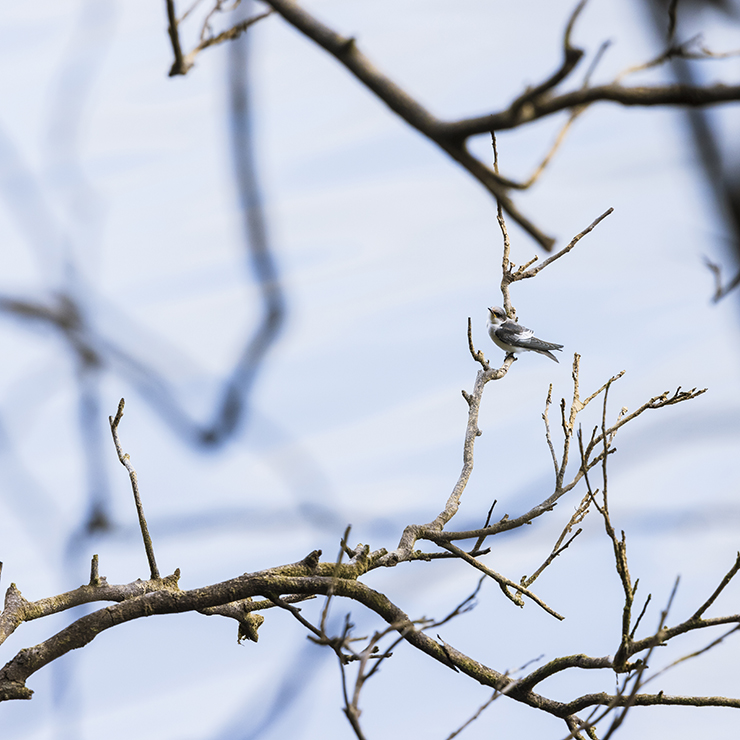
Juvenile White-winged Swallow waiting to scream at any passing adult. Another familiar sight!
After returning to the lodge, we had a few minutes before we were set to have lunch and be on our way. I knew that my chances for snagging a view – not even a photo – of the Painted Parakeets I had seen the previous evening were fading fast. Conversations with the lodge staff reassured me that the parakeets were common and were “always around”, but we know how these things go. Fortunately, the parrot family is a raucous one, and before long I heard the rasping vocalisations of my intended targets.
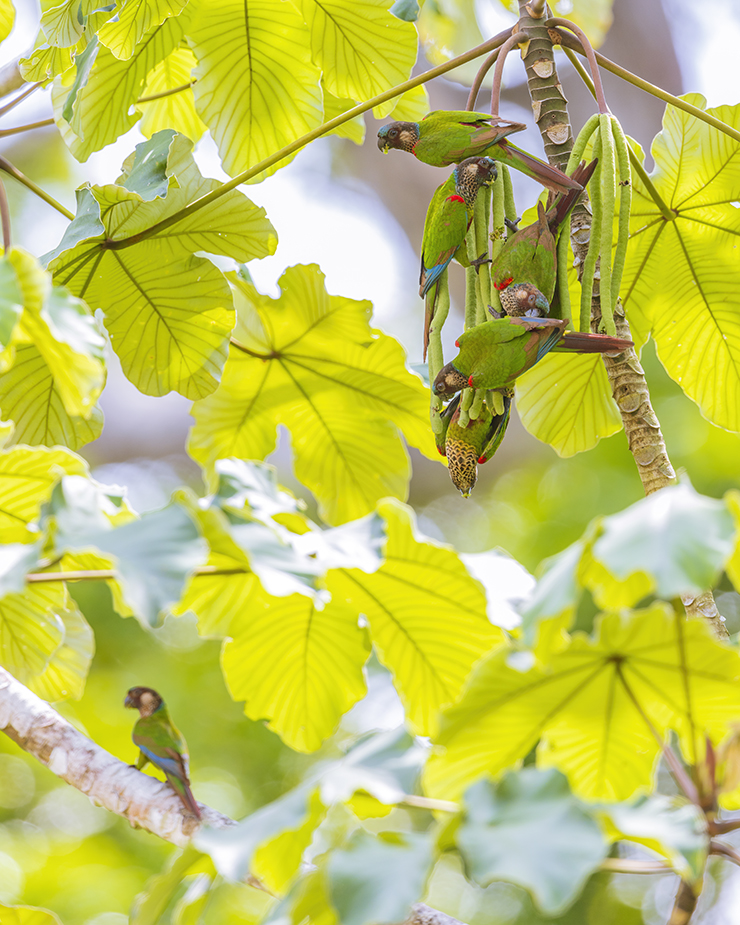
Painted Parakeet
As predicted, we were off to a solid start.


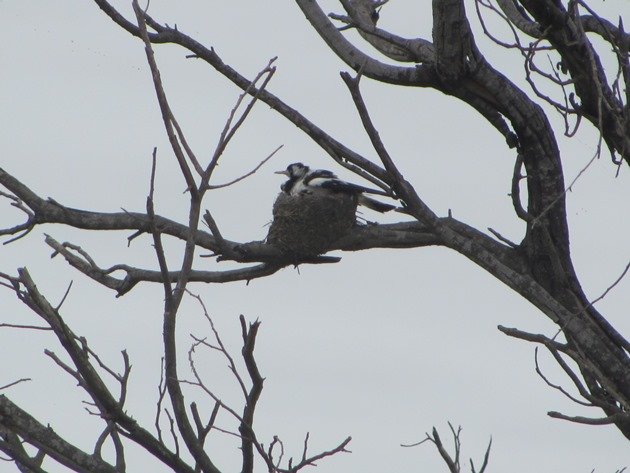
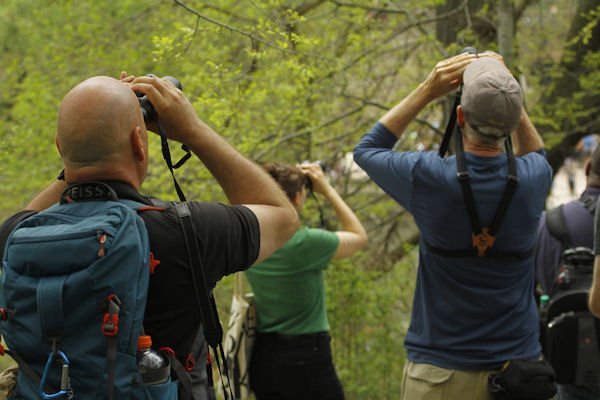

 New writers welcome – please contact us for details.
New writers welcome – please contact us for details.

















Leave a Comment